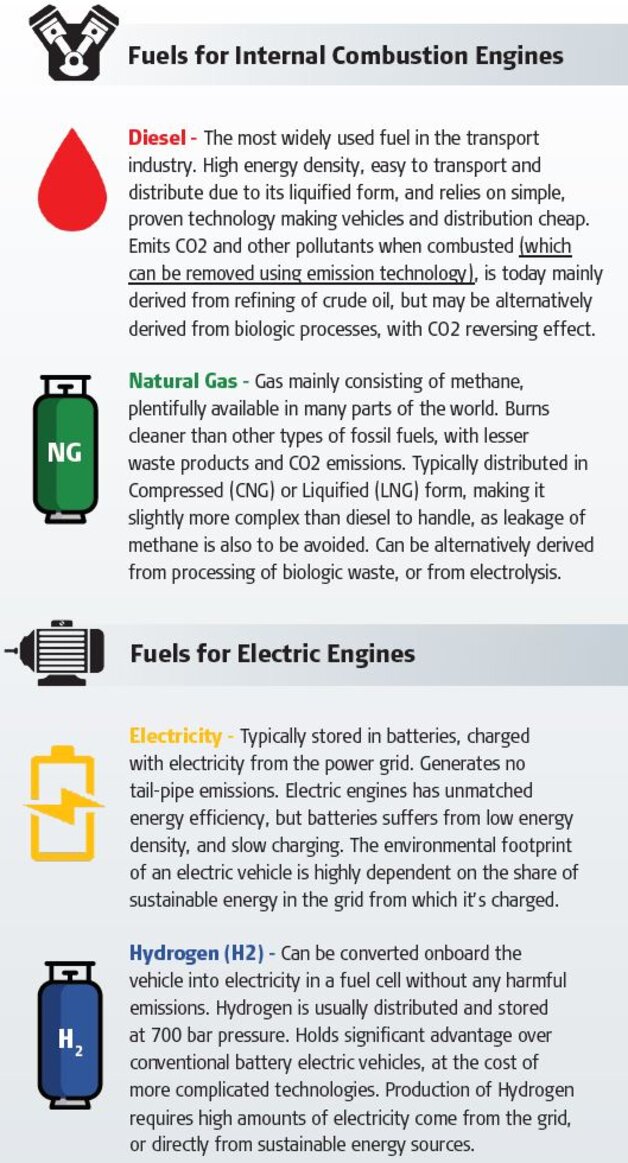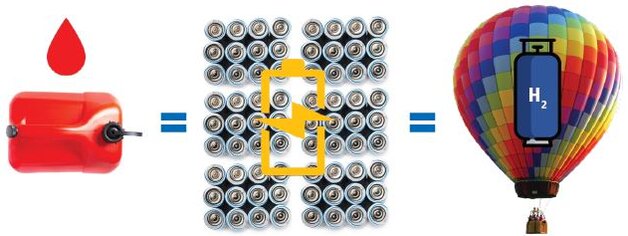- News and Events
- News
- 2020.06, Well-to-Wheel Insights

When it comes to climate,
everyone has an opinion.
If someone told you that vehicles with tail-pipes can be cleaner, more climate friendly, and cheaper to operate at the same time – than
so-called “zero-emission” vehicles – Would you believe it?
The question about what to do about our Carbon Footprint is topping political agendas all over the world. But there is a tendency that the debate becomes polarized, and that rarely leads to the best solutions.
For the transport sector, it might be no wonder, because answering the question: “What is the best powertrain technology for the future?” is extremely complex to answer.
It’s is a hot topic and in fact, if you have not already watched this excellent 13-minute TED Talk by Dr. Graham Conway, you should stop reading this, grab you phone and scan this QRcode to check it out.
When you’re done watching, come back here if you are ready to look behind the curtain and get familiar with the major factors that determines just how environmentally friendly a specific type of powertrain really is.

Understanding Well-to-Wheel
Even vehicles without tail-pipes needs energy and energy must come from somewhere. When we think of fuels, we often think of petrol and diesel. But fuels are simply a way of storing and distributing energy, until it can be used to power an engine.
The first part of the cycle is called Well-to-Tank, and covers all the steps from the fuel is produced and until it’s transferred to the vehicle. You could say that this is the part where energy is harvested, distributed and loaded.
The second part of the cycle is called Tank-to-Wheel, and covers the steps where the fuel is converted into energy on-board the vehicle, to finally make the wheels turn.

But what happens before that? Let’s look at the full picture. With conventional fuels this is popularly called “Well-to-Wheel” – and with the diversification of energy sources and powertrains, understanding this cycle is not exactly getting easier - but nevertheless ever more important!
The best example of why it is important to consider both parts of the cycle, is getting back to the battery electric vehicles. Battery Electric vehicles are often misleadingly referred to as “zero-emission vehicles”, but this applies only if you look at the Tank-to-Wheel part. When looking at the Well-to-Tank part, you will find that the are no “Zero Emission” about battery electric vehicles, if the energy used to charge it comes mainly from coal.
Energy Density and Storage
The amount of energy that a certain type of fuel can hold, either in terms of volume or weight, is essential for it’s feasibility and costs, and especially for transport vehicles.
Why? Because in the end, it’s all about moving as many goods as possible from A to B. Having to carry heavier, or more volumetric fuels in order to move a certain distance will result in movement of lesser goods – which ultimately leads to more trucks on the road.
For example, a battery pack that are capable of holding as much energy as a liter of diesel fuel, weighs over 50 times more, and takes up 15 times more space. In practical this means that a battery electric truck with the same range as a conventional diesel truck, can haul up to 30% less goods.

Energy density is also the explanation why Natural Gas and Hydrogen, when used as a fuel is always compressed (Hydrogen typically at 700 bar) - Because otherwise it would simply be to bulky to distribute, and take away too much capacity for cargo.
Energy Conversion Efficiency
Typically this is where there the Internal Combustion Engines has a weak-spot. While the average petrol-driven passenger car rarely achieves much more than 30% efficiency, diesel engines, and especially those on modern heavy duty trucks, can go above 40%.
In practical, this means that although a liter of diesel holds an impressive amount of energy potential of over 10 kWh, even the most state-of-the art combustion engine will have a hard time converting much more than 40% of that energy into actual movement. The remaining 60% are practically wasted through for example friction and heat loss.
Electric powertrains which are generally made from much simpler and fewer moving parts, are capable of converting up to 95% of the electricity into movement. In practical though,
efficiency is much more vulnerable to high speed, ambient temperatures, and auxiliary devices (like the A/C), meaning anything from 60-95% should be expected.
While compressed hydrogen holds impressive amounts of energy, it suffers from low Well-to-Wheel efficiency. 1 kg holds 33 kWh, but it takes over 60 kWh to produce. And when on-board the vehicle, expect additional 20% energy loss through the hydrolysing processs, before you add the efficiency of the electric engine.

Re-fueling or Re-charging?
In the world of petrol and diesel, the time it takes to re-fuel a vehicle is typically of little concern, because it’s a matter of minutes. In the world of transport industry, speed is the need, and when a truck is standing still it is not serving it’s customers.
Charging batteries, whether in a cell phone or in a heavy duty truck, takes time, and it’s no secret that bigger batteries, with higher capacity, takes longer to charge. Fast-charging of up to 150 kW is getting more common, and predictions are that we’ll soon see charging stations up to 500kW, and even 1MW.

Still, 2 fundamental factors are not to be ignored when talking about charging - especially fast charging:
• Charging Efficiency: Today this ranges between 80-90%, highly affected by temperature and charging speed (the faster charging, the lower temperatures, the lower efficiency). This basically means for every 10 kWh stored in the battery, the charger consumes 11-13 kWh.
• Power availability: Shorter charging, combined with higher battery capacity, leads to more concentrated energy peaks for the grid to handle. A truck being charged at a 1 MW charger, consumes the same energy in an hour, as a typical European household does in 3 months. How will it be when thousands of trucks needs re-charging at random hours, and all calls for fast-charging?
So what does it all add up to?
In this document we have only just scratched the surface, and already it is clear that there is no black and white, when comparing electrified powertrains to combustion engines.
There are many challenges to overcome, before electric powertrains will be universally feasible – both in terms of cost and efficiency of vehicles, infrastructure, and not least the availability of sustainable energy.
The diesel engine has a history of over 100 years of technological refinement and is still today continuously pushing the limits of efficiency. The last 30 years of innovation within emission solutions has brought us to a level where the exhaust gas from a modern Euro VI tail pipe is even cleaner than the air you breathe in many urban environments.
Several independent studies and forecasts predict that diesel will still be a pre-dominant fuel for the transport industry for at least 30-40 years ahead. Why? Because a premature electrification will backfire on both the climate the environment, and the society.
But hold on! What about global warming then?
Well, who says Diesel and Gas can only be fossil? Many cases demonstrates how bio-fuels with a reduced CO2eq effect of 70-90%, are being used efficiently as 100% blends in 10-20 year old vehicles, without technical modifications. All it takes is a different fuel in the tank, and you have instant near-zero-emission driving. So why wait when we can do it today?
Questions or comments?
Kristian Kaufmann / +45 63412648 / krk@dinex.dk

